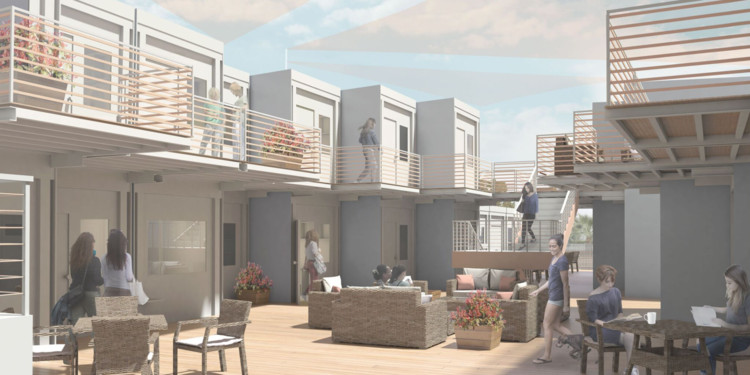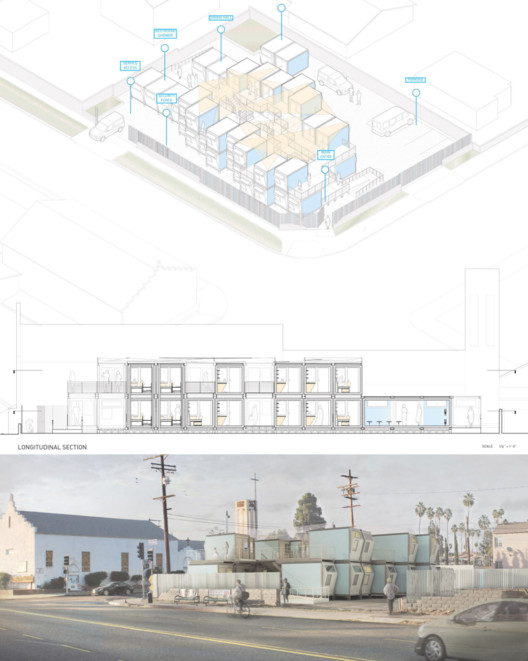News & Events
Homes For Hope featured on ArchDaily!
USC Architecture Students and MADWORKSHOP Collaborate to Combat LA’s Homeless Epidemic

Aggravated by limited upward mobility and a dire housing crisis, LA County’s homeless population has shot up 23 percent to nearly 58,000 in the past year alone, according The Los Angeles Times. Their increased visibility recently guilted voters into passing (by a two-thirds majority) a sales tax increase (Measure H) and a $1.2 billion bond initiative (Measure HHH) to provide housing and amenities. With the city now better financially equipped to tackle the problem, a new issue arises: what to build?

While LA has previously used public funds in collaboration with organizations (such as the Skid Row Housing Trust) to construct thousands of permanent supportive housing units, the current crisis calls for a new approach. The situation needs to be addressed fast, and the bureaucracy and lengthy design review that comes with erecting permanent construction is too inefficient to make a difference in the short term. An experimental new approach aims to house a large number of neglected individuals in transitional “temporary emergency stabilization” living units that can be rapidly constructed free of red tape.

This past semester, 11 fourth-year USC Architecture students teamed up with the progressive design foundation MADWORKSHOP on an ambitious proof of concept dubbed “Homes for Hope.” After months of prototyping full-scale mobile shelters, the team’s work resulted in a fully-code-compliant, 92-square-foot modular and stackable living unit. At an as-built cost of only $25,000 each, these identical pods could be one of the most efficient uses of public housing resources in the city’s history.

A guiding ethos for the project is the importance of dignified, thoughtful design–regardless of the clientele. Each unit is equipped with a CNC-milled bed, dresser, desk, and plentiful storage and lighting. Despite frugally serving a public good, the project has stirred minor controversy. “I think shelter should be a human right, but architecture for those experiencing homelessness is some of the most stigmatized architecture there is” laments Sofia Borges, the director of MADWORKSHOP. “There’s this judgment: why would you give them something so nice?”
Yet even as temporary structures, the teams see potential for the units to beautify the City of Angels. Each pod can be safely stacked in a communal arrangement to occupy unsightly parking spaces or vacant lots. With this admirable project outlined, now the only question is if LA will run with it.






